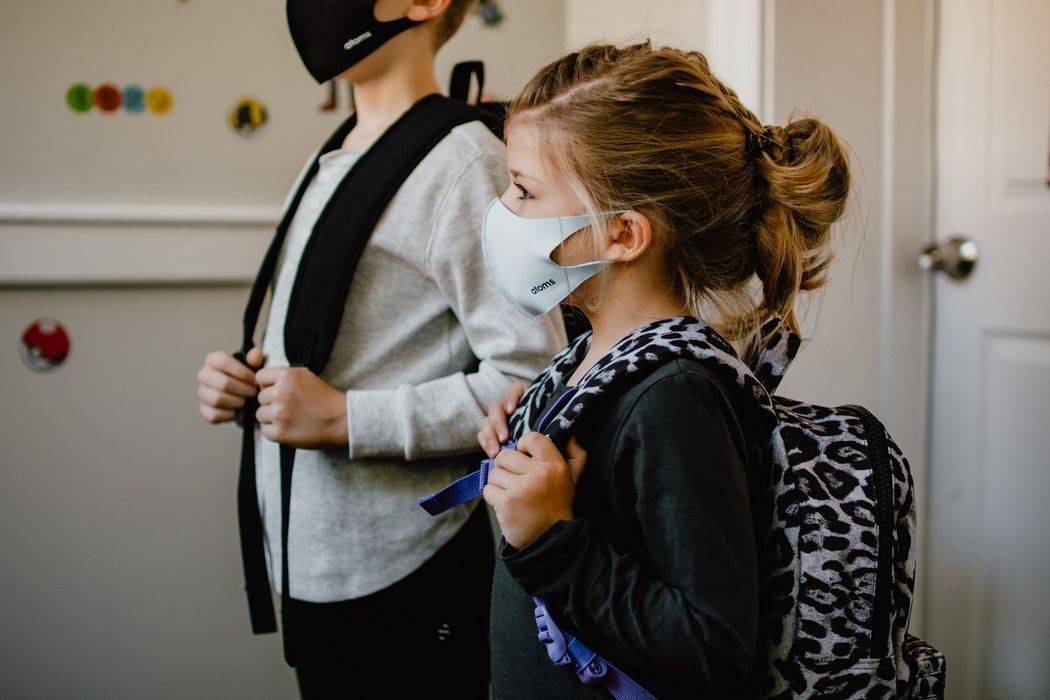



5 Ways to Boost Your Child’s Immune System Before Back-to-School
4th June 2024


It can be stressful especially for young children to adapt to a school-day routine, adjusting sleeping schedules, completing assignments, building new social circles, after the summer break. Germs can easily attack the weak point in children’s immune systems and cause flu and colds.
Here are 5 natural boosters to prepare your child’s body for the back-to-school season.
Personal hygiene
Good personal hygiene practice is the first step to a healthy immune system. To start off, develop a habit with your child to wash hands every time before eating, after sneezing, coughing and going to the bathroom. Washing hands regularly with antiseptic soap and water can effectively remove germs on the hand surface. A 2008 public health research found that improvements in hand hygiene can significantly reduce the infection of gastrointestinal illnesses by 31% and respiratory diseases by 21%. Try to engage small kids in the hand-washing process with scented soap or introduce the habit as a game.
Also, remind your child not to touch their face, nose, mouth or eyes directly to avoid infection. Always clean high-touch items such as telephones, toys, doorknobs, faucets, etc.
Healthy eating
Home-cooked foods are always preferred over prepackaged foods or outside foods because you have a better idea what ingredients go into your child’s tummy. Try to incorporate more whole foods into the diet, such as whole grains, vegetables and fruits, lean protein; and avoid foods high in sugar, salt and fat, or processed foods.
Vegetables and fruits
Vegetables and fruits are the most nutritious foods in the world because they are loaded with antioxidants to protect cells from oxidative damage (accumulation of free radicals in the body generated internally or from external sources, such as air pollution and preservatives) and strengthen your child’s immune system. Vegetables and fruits also contain different vitamins and minerals that are good for health.
Despite the health benefits, many children resist eating veggies and fruits because of the slightly bitter taste and fibrous texture. So here’s an idea to motivate your children to at least give a try: prepare vegetables and fruits in rainbow colors and arrange them decoratively. Alternatively, you may try to experiment with different cooking methods and spice up the veggies with different flavors using natural ingredients to stimulate your child’s platelet. Here is our Alea list for a complete rainbow color palette with vegetables and fruits:
- Red: pomegranate, strawberries, raspberries, tomatoes, watermelon, red apples
- Orange/ Yellow: oranges, pumpkin, carrots, lemons, sweet potato, pineapples, apricots, grapefruit, mangoes, corn, ginger
- Green: cucumber, lettuce, broccoli, cabbage, kale, asparagus, avocados, kiwi, celery, spinach, peas, green apples, green grapes
- Blue/ Purple: blueberries, blackberries, grapes, plums, eggplant
- White/ Brown: cauliflower, mushrooms, bananas, potatoes, onions, radishes, white peaches, garlic
Vitamins and minerals
Some of the vitamins and minerals help strengthen the immune system:
- Vitamin C Vitamin C is an antioxidant responsible for destroying free radicals built up in the body and supporting the body’s natural immune response. Sources of vitamin C include oranges, lemons, kiwis, and many other fruits and vegetables.
- Vitamin D Vitamin D is responsible for reducing the production of proinflammatory compounds in the body to reduce the risk of viral infections, such as respiratory tract infections. Vitamin D can be found in egg and dairy products, as well as fatty fish. Alternatively, children can obtain vitamin D through sun exposure.
- Zinc Zinc promotes production of white blood cells, which are responsible for defending against infections. Some good sources of zinc are protein-based foods (oysters, red meat, and poultry), beans and nuts. But beware of the upper limit as excessive intake may lead to gastrointestinal discomfort.
- Iron Iron helps promote the functionality of immune cells. Iron can be found in red meat and fish, as well as in plant-based sources, including whole grains, nuts, beans, bananas and spinach.
Omega-3s
Omega-3 is famous for its anti-inflammatory effect. Inflammation is a normal immune response, but persistent inflammation can cause tissue damage and affect health. Omega-3 can help restore functional immunity by preventing further infections and promoting tissue repair. Omega-3 can be found in walnuts, pecans, chia seeds, flaxseeds, fatty fish, such as salmon, mackerel, sardine, etc.
A friendly reminder regarding whole nuts: prepare nuts in a finely ground style to avoid the risk of choking in young children.
Probiotics
Probiotics play a crucial role in improving immunity. Probiotics are “beneficial” bacteria that fight against infectious bacteria in the body by competing for nutrients in the intestines. It helps restore the balance between “good” and “bad” bacteria and maintains a healthy gut microbiota. Foods that contain probiotics include yogurt, apple cider vinegar, and fermented food, such as kimchi and pickles.
Stress relief
Stress is often an overlooked mental health issue amongst children. Clinical studies from The Journal of Immunology have shown that children living in high-stress environments have higher levels of cortisol, a stress hormone which may disturb the balance in the immune response.
Psychological stress from internal or external sources like peers, parents and teachers can accumulate in children when they experience prolonged adversities in life. As a parent, you may not always be able to shelter your child from challenges coming down their road, but you can certainly support them throughout. Try to establish a comfortable setting for your child to open up and share their worries to build mutual trust with them. Outdoor activities can also be mini getaways for your child to take a fresh breath of air in nature.
In addition, exercising is a scientifically proven way to relieve stress. Have fun with your child in aerobic activities, cycling, hiking, swimming, etc., to get rid of negative thoughts and feelings in exchange for a good sweat.
Regular sleep schedule
To catch up with the intense back-to-school routine, your child might have to stay up late to finish all the schoolwork. Insufficient sleep is associated with vulnerability to fight infections. A healthy sleep habit is crucial to children, not only because they are under rapid growth and development, but also that sleep promotes the production of infection-fighting antibodies (cytokines) and cells (T cells) which help fight intracellular pathogens. The American Academy of Pediatrics proposes a Childhood Sleep Guidelines for children of different ages as follows:
0-3 months: 14-17 hours of sleep 4-6 months: 12-16 hours of sleep 1-2 years: 11-14 hours of sleep 3-5 years: 10-13 hours of sleep 6-12 years: 9-12 hours of sleep 13-18 years: 8-10 hours of sleep
For quality sleep, keep a consistent sleep and wake-up time with your child to keep their biological clock in tune.
Vaccination
In Hong Kong, the Childhood Immunization Programme helps you keep a good track of your child's vaccinations against detrimental diseases. A vaccine is a safe substitute for a child’s first exposure to a disease to help them develop immunity without suffering from the actual diseases that the vaccine is targeting.
In particular, seasonal influenza vaccination is effective to prevent seasonal influenza especially during the back-to-school season because viruses spread easily amongst children. However, the immunity established after vaccination will decrease over time and may drop to an unprotected level after one year. Therefore, it is recommended that your child should get vaccinated on a yearly basis.
We hope these tips will help you prepare your child for a fruitful and exciting school year ahead!
Looking for life or health insurance for yourself, your family or your team?
Do you already have an insurance policy? You could find a better plan!
Alea brings you choice, unbiased advice and outstanding service, with access to 100+ options from 25+ insurance companies. If you already have an insurance policy, switching insurance policies with Alea doesn’t cost you a thing.
Get free quotes with us today.
An advisor will be in touch to answer all your questions!
This article was independently written by Alea and is not sponsored. It is informative only and not intended to be a substitute for professional advice and should never be relied upon for specific advice.
